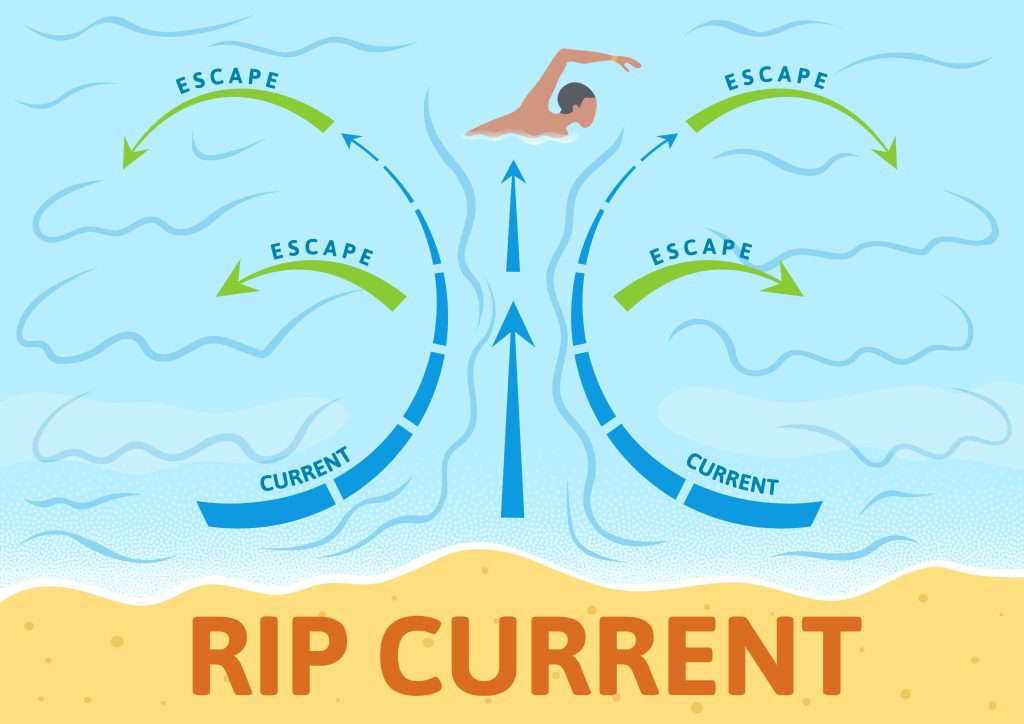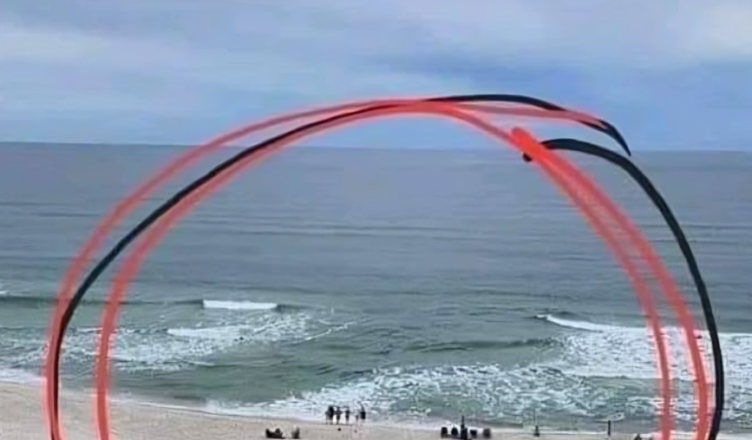A day at the beach can go horribly wrong if you are unaware of the rules of the ocean and how the sea works. Specifically, phenomena known as Rip Currents can be incredibly dangerous for those who are unaware. If you’re planning a day at the beach, it’s important to know how to spot rip currents and what to do if you get caught in one.
What causes rip currents?
Rip currents are powerful, narrow channels of water that flow away from the shore. These currents have a powerful pull that can drag even the strongest swimmers far out into the ocean. They can be difficult to spot, but if you know what to look for, you can avoid them and stay safe in the water. (1)
Rip currents are typically formed by a combination of factors, including waves, wind, and the shape of the shoreline. They are most common on beaches with a steep drop-off, where the waves break close to shore. When waves break, they push water towards the shore, creating a buildup of water that must flow back to the sea. This is where rip currents come in. Rip currents are formed when this water rushes back out to sea in a concentrated channel. (2)
How to spot rip currents
Rip currents can be difficult to spot, but there are a few things you can look for. First, look at the direction of the waves. Waves should be rolling in towards the beach and breaking (when a wave has a foamy, white cap) near the shore. A rip current is often a pocket along the shore where the water looks surprisingly calm. For non-ocean-savvy swimmers, you may think that this looks like the perfect, wave-free spot to enter the water. This may also look like a break in the pattern of the waves, where the water is not breaking as it should be. These are often signs that a rip current is present.
Do not enter the sea here if you see currents forming this way. Staying away from these areas is important, as rip currents can be very dangerous. They can pull even the strongest swimmers out to sea, and can be difficult to swim against. It’s also very difficult for someone to come and rescue you out of one, as they, too, will end up caught in the current.
Read: Horrifying video clip shows man’s final moments amidst gruesome shark attack
What to do if you get caught in a rip current
If you get caught in a rip current, staying calm is important. Don’t try to fight against the current, as this will only tire you out. Instead, swim parallel to the shore, following the current until you are out of it. You can swim back to shore once you are out of the current. It’s also important to remember that you don’t have to be a strong swimmer to get out of a rip current. If you can float on your back and paddle with your hands, it will help you get back to shore faster. You might be rather exhausted once you are free from the rip current. If this is the case, float on your back rather than trying to swim to shore and allow the waves to naturally push you towards the beach.

Rip Currents vs. Rip Tides and Undertows
It’s also important to remember that rip currents are not the same as rip tides or undertows. Rip tides are caused by the moon’s and sun’s gravitational pull and are unrelated to waves or wind. It is a powerful current caused by the tide pulling water through an inlet along a barrier beach. When the tide is falling, there is a strong flow of water through an inlet towards the ocean. These are highly dangerous and difficult to predict unless you understand tides and tidal flow.
Undertows are caused by the movement of water back out to sea after a wave breaks, and are not as powerful as rip currents. Big breaking waves on the beach produce a large uprush and backwash of water and sand. This sand and water mixture, flowing back towards the ocean, gets pulled into the next breaking wave. If you are caught in an undertow, it will usually feel like you are being sucked underwater as the wave breaks over your head. Though you might get roughed around by the wave, the undertow doesn’t pull you out to sea and isn’t typically quite so dangerous for adults. However, this can be dangerous for children as they aren’t strong enough to walk back up the beach through the pulling water.
The Bottom Line
Rip currents can be dangerous, but if you know how to spot them and what to do if you get caught in one, you can stay safe in the water. Remember to always be aware of your surroundings and to never swim alone. If you are not a strong swimmer, avoid beaches with large waves and consider using a life jacket when in the water. Also, pay attention to signage that will tell you if it is a common rip current or rip tide spot and if that beach is known for a strong undertow. If there are red flags up at the beach, you are probably best not to go in the water. With a little bit of knowledge and preparation, you can enjoy a day at the beach without any worries.
👉👉Підпишіться на наш 👉телеграм 👈, щоб першим дізнатися всі новини❗️❗️❗️
